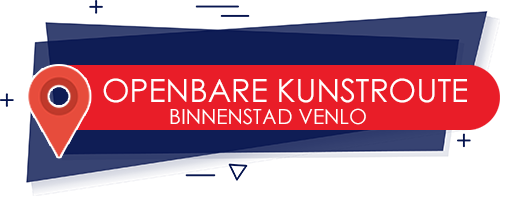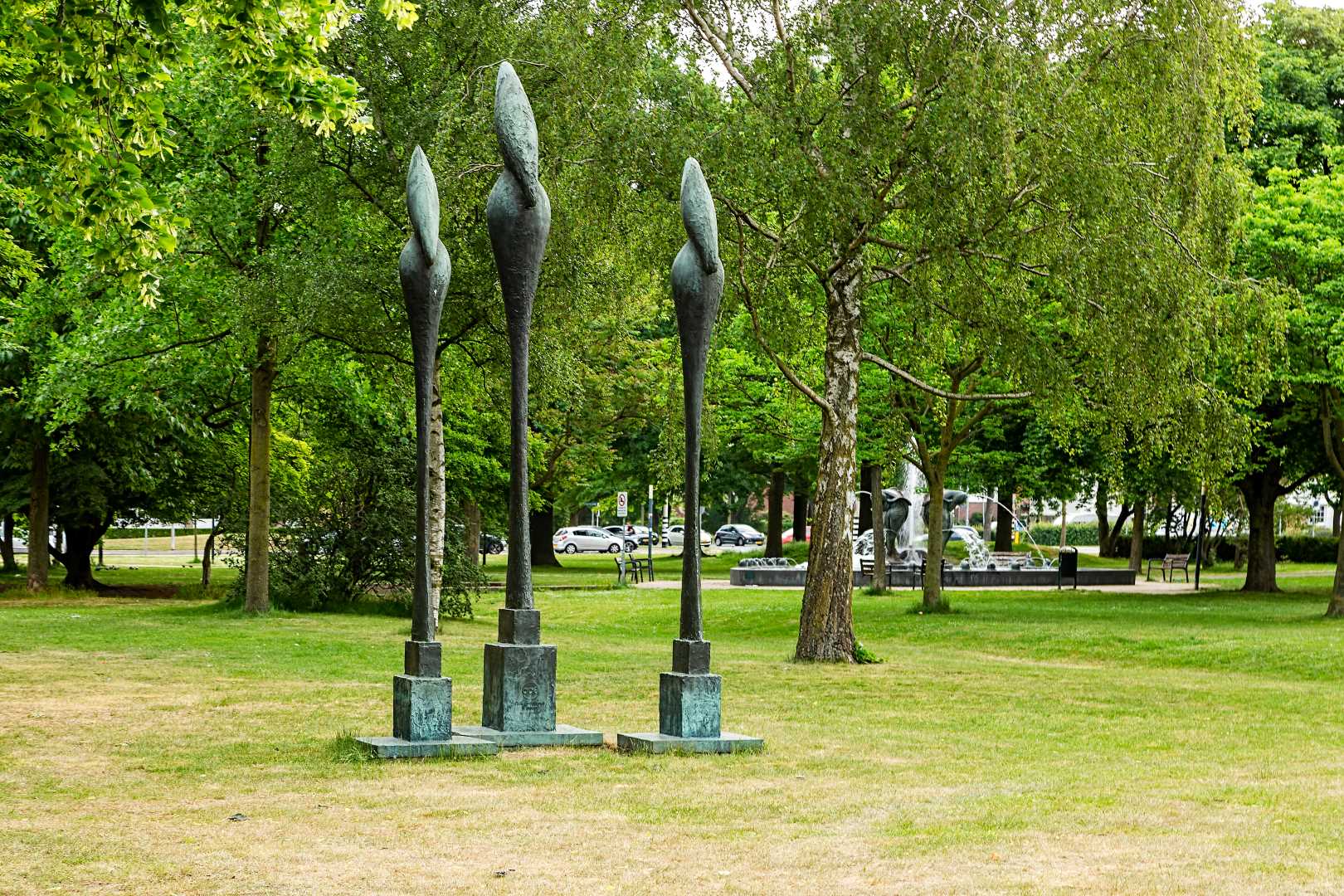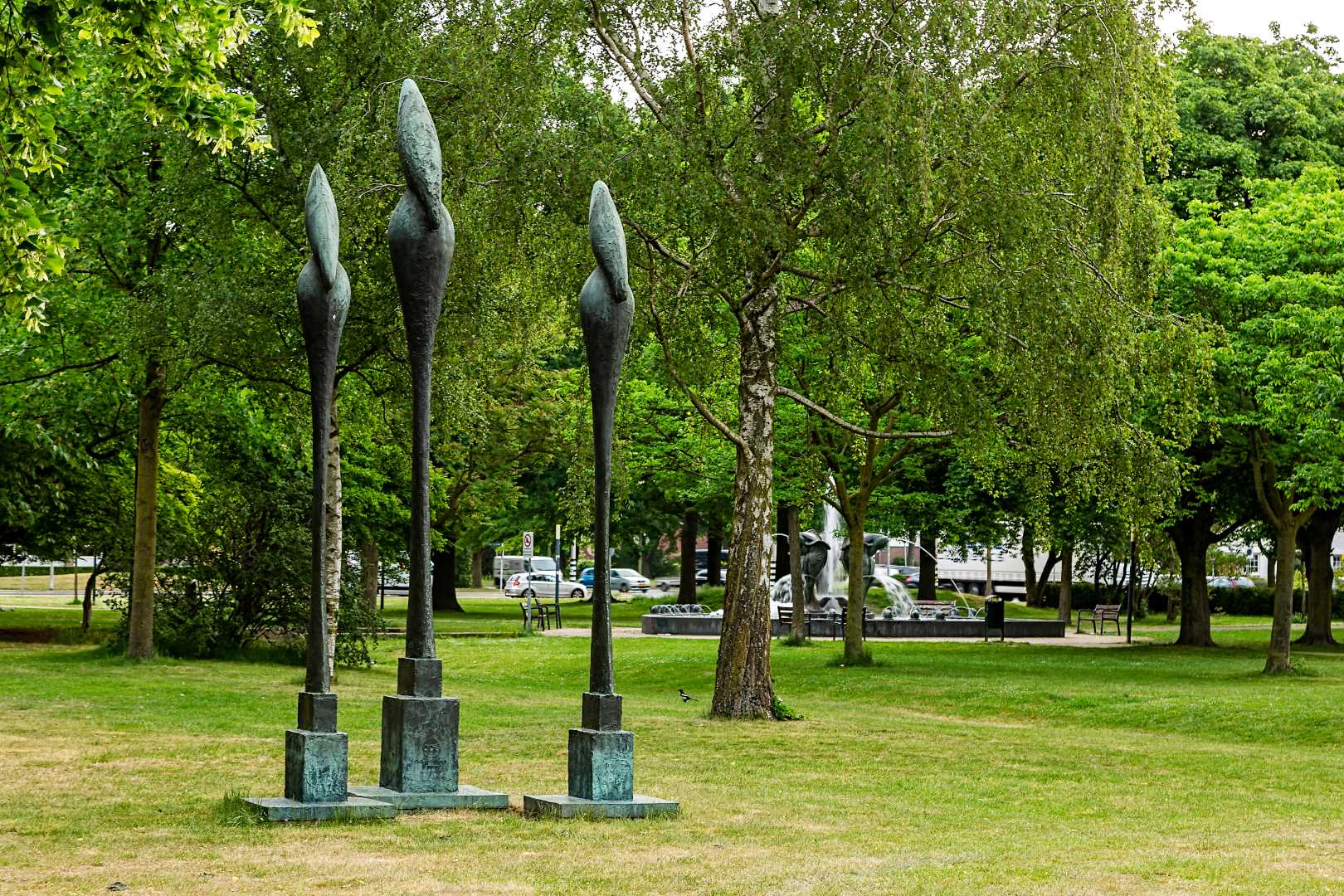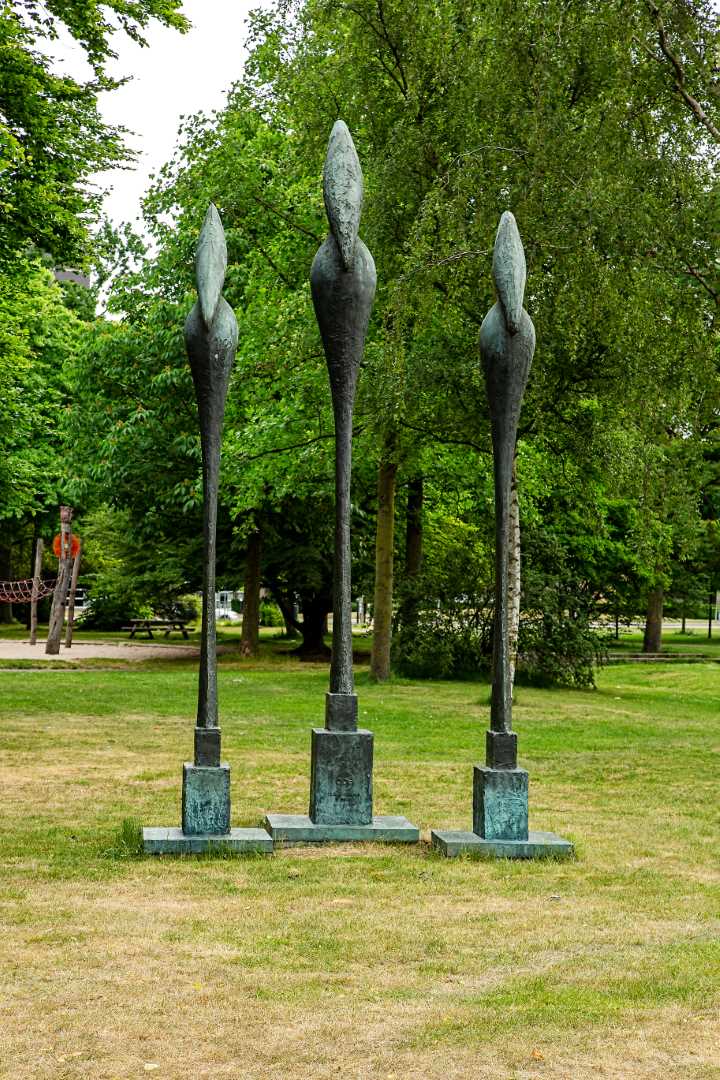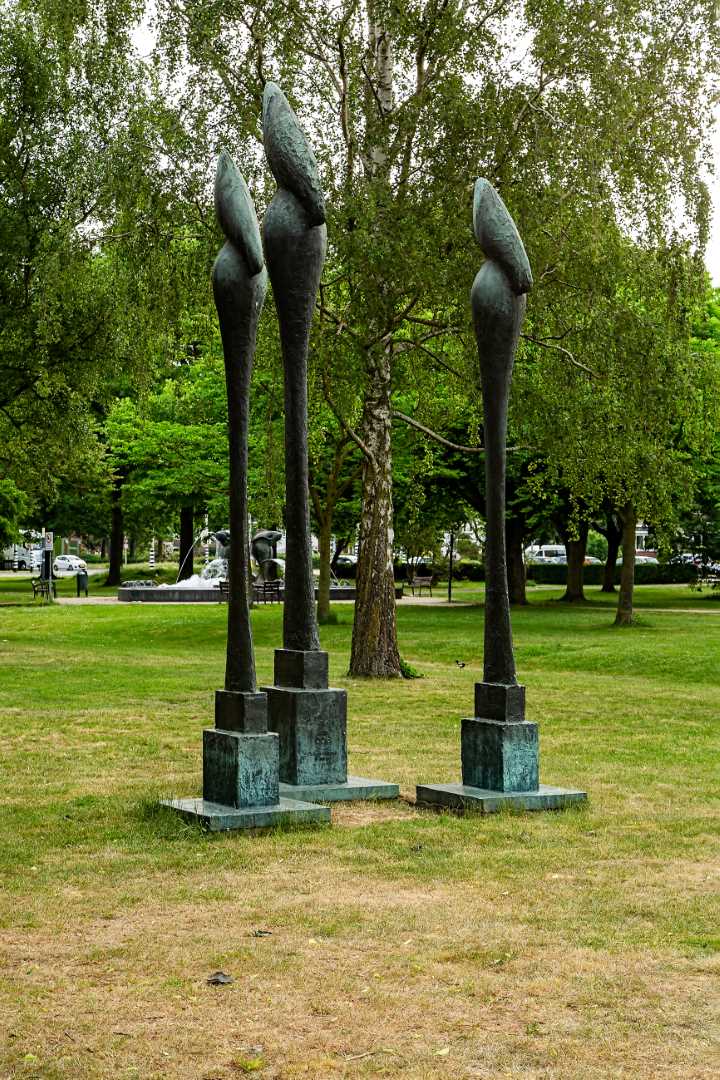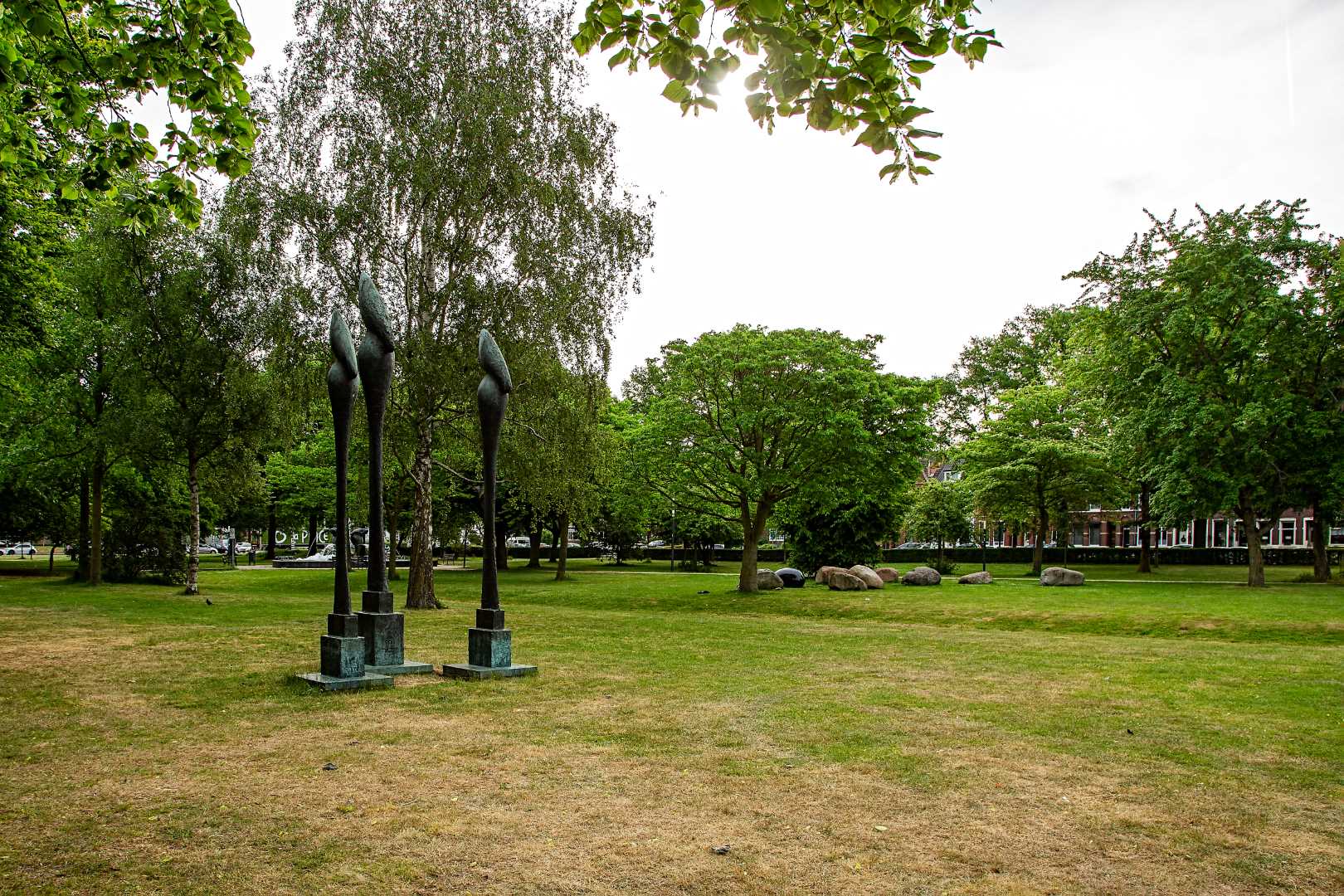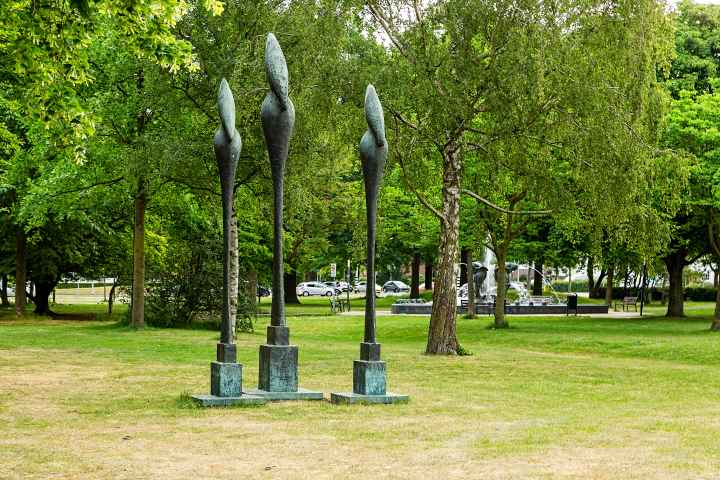Three Vicals
Juliana Park
Three Vicals – Frans Gast
The work Three Vicals was placed in Julianapark in 1978. There is no more information about it. The viewer is free to make up his or her own story about it.
The Artist: Frans Gast
François Marie Gerardus Hubert (Frans) Gast (1927 – 1986), born and deceased in Maastricht, was active as a sculptor, draughtsman and medallist. From 1947 to 1951 he studied sculpture at the Middelbare Kunstnijverheidsschool (later the city academy) and from 1951 to 1955 he did a postgraduate course at the Jan van Eyck Academy in Maastricht. In 1956, with a French scholarship, he studied in Robert Couturier’s studio at the École nationale supérieure des arts décoratifs in Paris. He also taught sculpture, among other things at the Fontys Academy for Visual Education in Tilburg.
He was also a performing artist, making both abstract and figurative works. Sculptures of which the Three Vicals is a good example. Other works can be found in Maastricht, Heerlen, Utrecht and Tilburg, among other places.
The Juliana Park
A group of men playing petanque, young people playing, people lazing in the shade of a tree or sitting on a bench reading a book. As soon as the weather gets good, Julianapark is a place of meeting. For example, during the festivals that take place there in the summer months, such as the culinary event Lekker Venlo, dance event Stereo Sunday and the now famous Zomerparkfeest. The spot we now know as Julianapark, adjacent to Keulsepoort, is the spot where one of the four city gates in Venlo’s fortifications once stood.
Just outside the Keulsepoort, until the nineteenth century, was a location called the Elysian Fields. From 1875, it was the location of the shunting yard of the Köln-Mindener Bahn, an international railway connection between Hamburg and Paris with a stop in Venlo. Therefore, in that period, the road west of the park was called Hamburgersingel. After the war, it was changed to Deken van Oppensingel, after Dean Jules van Oppen, who died during the war as a resistance fighter in Camp Vught.
The people of Venlo also called the road Ponywaeg. There could be two explanations for this. In line of the road there used to be the Pope factory. The young ladies who worked there were the first in Venlo to have their hair cut in a Pony style. Another explanation could be that the hussars – stationed in Venlo between 1816 and 1913 – took their horses (Ponies) out on the Hamburgersingel.
In 1971, the Van Bommel van Dam Museum opened its doors in Julianapark, nowadays located in the former post office at the Keulsepoort. Since 2000, the Limburgs Museum has also been part of the park. After the departure of van Bommel van Dam, Foodhall MOUT settled in the drastically renovated museum building in 2022.
In Julianapark there are several works of art and also some parts of the former fortress walls, of which a part has been preserved underground.
